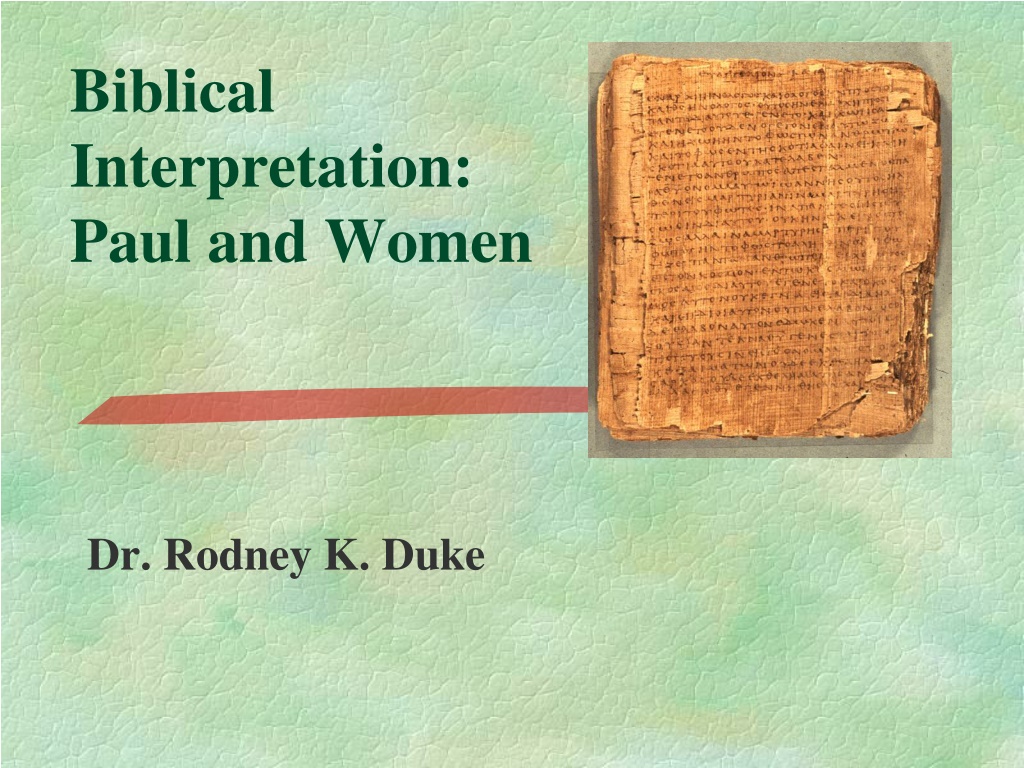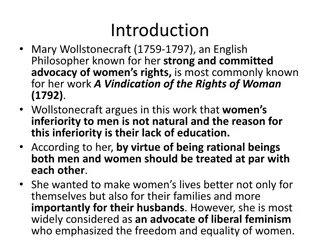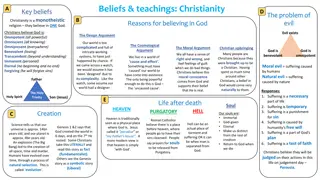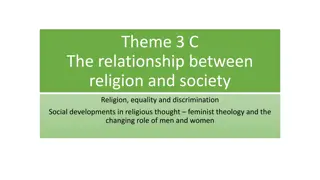Insights on Paul's Views on Women in Christianity
Dr. Rodney K. Duke provides a comprehensive analysis of Paul's teachings on women in Christianity. He highlights Paul's principle of gender equality in Christ, the contextual background of women's roles in worship and leadership, and the subtle equalizing approach Paul takes towards men and women in relationships. Despite appearing to maintain the cultural status quo, Paul actually emphasizes mutual submission and love between husbands and wives, setting a precedent for gender equality in the early church.
Download Presentation

Please find below an Image/Link to download the presentation.
The content on the website is provided AS IS for your information and personal use only. It may not be sold, licensed, or shared on other websites without obtaining consent from the author.If you encounter any issues during the download, it is possible that the publisher has removed the file from their server.
You are allowed to download the files provided on this website for personal or commercial use, subject to the condition that they are used lawfully. All files are the property of their respective owners.
The content on the website is provided AS IS for your information and personal use only. It may not be sold, licensed, or shared on other websites without obtaining consent from the author.
E N D
Presentation Transcript
Biblical Interpretation: Paul and Women Dr. Rodney K. Duke
Dukes opinion: Paul and Women (1 of 4) 1. Paul s main principle is that in Christ there is no male or female. (Gal 3:28) 2. The Household Codes functioned rhetorically to communicate the point that Christianity was not a social revolution designed to overthrow the status quo. Rather, Paul argues that the individual Christian is to exhibit the character of Christ within whatever role he/she is in. (Eph 5:22-6:9; Col. 3:18-25) 3. Point #2 characterizes Paul s life: although he is free in Christ (to eat food offered to idols, etc.), he subordinates his freedom to the principle of being a Christian witness, who gives no cause for others to stumble. (See 1 Cor. 8-9, especially 9:19-23) He is asking no more from others than he does of himself. 4. Paul actually presses the bounds for his day, using women in ministry as much as possible.
Dukes opinion: Paul and Women (2 of 4) 5. Paul s instructions regarding women s roles in worship and in church leadership need to be placed in the background context in which some men and women were for the first time coming together in worship which did not involve fertility religions. Other religions often separated men and women. 6. Paul actually does a great deal of subtle equalizing of men and women. Eph. 5: 21-33: Note: Although on the surface, rhetorically, Paul appears to be upholding the status quo between these traditional pairings (husbands and wives, masters and slaves, etc.), Paul does not use the typical hierarchical language of his day when he gives instructions to husbands and wives.
Dukes opinion: Paul and Women (3 of 4) 6. Paul actually does a great deal of subtle equalizing of men and women. Eph. 5: 21-33: (Cont.) A) Regarding women: Eph. 5:22 uses ellipsis (deliberate omission): Wives [ ] to your husbands as to the Lord, picks up its verbal idea of submit from the previous verse: submit to one another (vs. 21)* *Paul asks women to do what he asks ALL Christians to do, submit to one another! submit B) Regarding husbands: Eph 5 (1) Eph 5:23 Husband as head. Figurative use of head in Greek culture: can be used as boss, but can also be used as source, as in the head of a river. Need to ask which is being assumed here.
Dukes opinion: Paul and Women (4 of 4) B) Regarding husbands: Eph 5 (cont.) (2) Husbands are to love their wives. Again, Paul has applied not a verb of hierarchy, but a verb that he has applied to all Christians to employ in their relationships, love one another. Conclusion: While on the surface Paul has maintained the status quo of his culture in regard to the roles of husbands and wives, in actuality he has applied the roles (submitting and loving) that he demands of all Christians. By implication he has done much leveling between wives and husbands in the culture of his day. The later church, however, did not continue to follow the trajectory that Paul, and Jesus, began.























